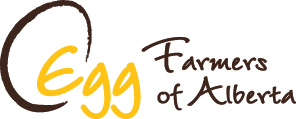“We have neighbours knocking on our door at all hours of the day, with their kids in tow, asking if they can look at our chickens,” says Jest Sidloski, who raises backyard chickens in one of downtown Red Deer’s mature neighbourhoods.
“The parents explain to them that this is where eggs come from. People love it. It’s a great education thing.”
It is also a great thing for the future of Canada’s poultry industry that the three chickens Sidloski’s family owns came from the Heritage Chick Sale, an event run jointly by the company he works for, Peavey Mart Industries, and the University of Alberta’s Poultry Research Centre, housed in the Faculty of Agricultural, Life and Environmental Sciences (ALES).
For one day each May, Peavey Mart stores across Alberta sell day-old chicks from several flocks of rare heritage chickens raised at the poultry unit on the university’s South Campus in Edmonton.
Heritage chicks cost more than the chicks from traditional hatcheries that Peavey Mart has been selling, mainly to farmers, for more than 30 years—between $4 and $8 each. However, this event, which always sells out, represents far more than a simple transaction for Peavey Mart. All proceeds from the sale help preserve the genetics of five heritage chicken breeds: Brown Leghorns, Light Sussex, Barred Plymouth Rock, RhodeIsland Reds and 1978 Random Breds.
These antique breeds are not used by the modern commercial poultry industry anymore, and so their genes are very uncommon in commercial lines, which have been bred for a few specific traits.
“We don’t know whether those genes would be important in a changing production system, but with reduced genetic variability comes an increased likelihood that commercial chicken lines might be susceptible to environmental, nutritional and physiological problems,” said Doug Korver, acting academic leader of the Poultry Research Centre and a professor of poultry nutrition.
“In the future, as breeding techniques evolve, it may be possible to identify particular genes that could be incorporated through novel techniques, but if we lose the heritage chicken lines, we lose those genes. By preserving these lines, we are planning ahead for several scenarios that we can envision happening, and for unforeseen events, too.”
However, the cost of keeping the flocks housed at the poultry unit is a financial strain for the Faculty of ALES.
By guaranteeing to contribute $20,000 annually to the Heritage Chickens Program, Peavey Mart relieves some of that burden, while also creating awareness in consumers about where their food comes from. Peavey Mart provides that support through donating a portion of the chick sales and from their own philanthropic contribution.
By guaranteeing to contribute $20,000 annually to the Heritage Chickens Program, Peavey Mart relieves some of that burden, while also creating awareness in consumers about where their food comes from. Peavey Mart provides that support through donating a portion of the chick sales and from their own philanthropic contribution.
“We believe this program is important, and even essential,” says Doug Anderson, CEO of Peavey Mart parent company Peavey Industries LP. “Genetic diversity in poultry supports food security and food choices for everyone, and having this program here in Alberta is a stake in the ground for agricultural research in the province. We also like how the program connects consumer decisions to the research. Plus, these heritage chickens are really cute!”
Heritage chick buyers value the role they play in preserving the breeds, says Sidloski, the director of marketing and customer experience for Peavey Mart. They also appreciate the benefits, such as being able to buy very small quantities of chicks, especially if they are the part of the growing group of backyard chicken enthusiasts that prompted Peavey Mart to start the project.
“Most cities only allow you to own four to six chickens, and when you order from a traditional hatchery the minimum order is 25,” says Sidloski.
As well, heritage chickens are hardier and live longer, with some laying eggs for six years or more, he says.
Peavey Mart holds workshops to teach novice chicken owners how to create brooders (temperature-controlled homes which the newly-hatched chicks require), and also about nutrition, behaviour, disease identification and biosecurity. Staff also receive up to eight hours of training.
The University of Alberta’s Poultry Research Centre and Peavey Mart Heritage Chick Sale started in 2014, and is an offshoot of the centre’s popular Adopt a Chicken Program, which began a year earlier. For that program, customers “adopt” a chicken for an annual fee, and receive a dozen eggs every two weeks, from January through October.
While a percentage of the approximately 5,000 heritage chicks are bought in the stores at the Heritage Chick Sale, most are pre-ordered on the Poultry Research Centre’s heritage chicken website and then picked up on sale day. Pre-orders help buyers ensure they get the breed of chick they want, since chick numbers are limited, and start in mid-to-late January.
It’s satisfying to be in control of what you eat, says Sidloski, but unlike raising bees for honey, there is added fun in raising chickens because most owners also come to consider them as pets.
“People really like the experience. It’s exciting to share pictures of your chickens and it’s exciting to give away eggs as gifts.”
Here is the link to the article – https://www.ualberta.ca/agriculture-life-environment-sciences/alesnews/2018/may/fresh-eggs-fun-and-a-hedge-against-the-future


